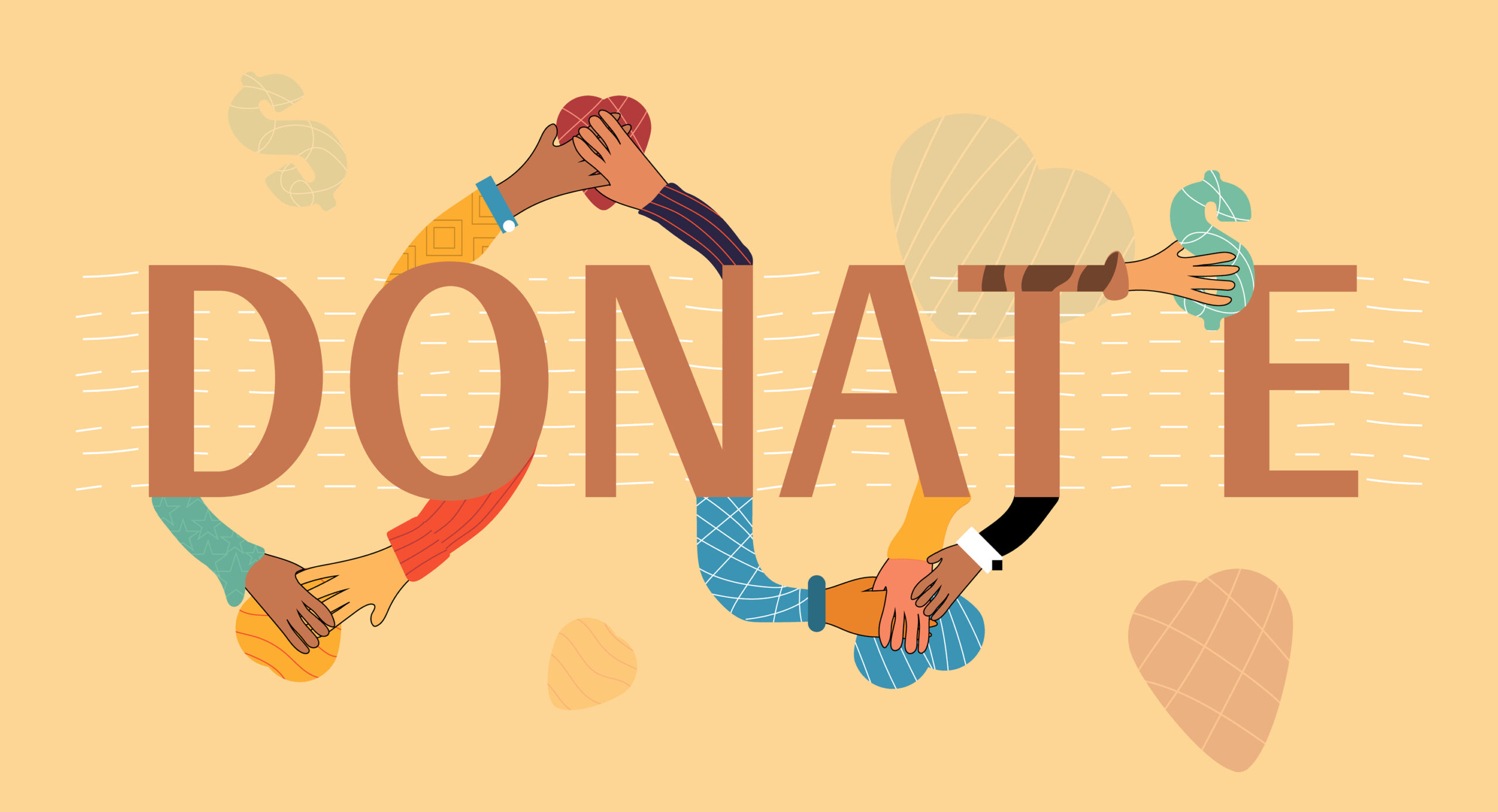
Alexander Maune consultant Donation-based crowdfunding is a follow-up paper to the previous paper entitled, “Crowdfunding as alternative finance for entrepreneurs,” that was published in this newspaper. As economies turn global and digital, alternative financial sources have also proliferated due to advances in the “FinTech” industry. The development in the “FinTech” industry has disrupted the traditional sources of finance that had previously dominated the space. With the migration of people to various countries seeking greener pastures having a huge positive impact on foreign remittances, many countries have managed to attract these funds into developmental projects or investments. One such way is through donation-based crowdfunding.
Donation-based crowdfunding (BDCF) has attracted the attention of many entrepreneurs and start-ups in the recent past. Countries have seen development projects in both urban and rural areas being financed through BDCF. Take, for example, a community that wants to construct a small dam for irrigation purposes and to provide drinking water for animals can crowdfund to finance such a project and BDCF will be an appropriate method for that.
But what is BDCF? Where has it been used? What are its advantages and disadvantages? How reliable is it as a source of finance? Can it finance huge developmental projects? Can it be adopted at the country level? These are some of the questions people might be asking. The following sections will try to address some of these questions.
Crowdfunding The Oxford Dictionary has defined crowdfunding as, “the practice of funding a project or venture by raising many small amounts of money from a large number of people, typically via the internet.” Although crowdfunding traces its roots to donation activities in which contributions are collected from numerous individuals, it is different from general fundraising activities. As implied by its etymology, a compound of “crowd” and “funding,” the term derives from the active support of “crowds” via social network platforms. Hence, the acuteness of trust becomes important as was fronted by Chen, Dai, Yao, and Li (2019) who showed a positive association between trust and funding intentions in a donation crowdfunding context in China.
According to CCAF (January 2017), crowdfunding is a relatively old practice commonly known as “friends and family financing.” In Zimbabwe, it is synonymous with “rounds or mukando” and has been so popular with women. Now with the development of the “FinTech” industry, crowdfunding has emerged as a social media-based funding mechanism, operating on more than 600 platforms worldwide, that provides capital to early-stage companies and functions as a new asset class. Crowdfunding based initially on soliciting pledges or donations has emerged as a multibillion-dollar global industry. It channels money to individuals or organisations for seed finance, product development, and social causes.
Donation-based crowdfunding Cambridge Centre for Alternative Finance [CCAF] (February 2017) in a report entitled, “The African and Middle East Alternative Finance Benchmarking,” defines donation-based crowdfunding as donors providing funding to individuals, projects or companies based on philanthropic or civic motivations with no expectation of monetary or material return. BDCF focuses more on charity and philanthropic causes, as well as educational, community and social enterprise. There is no legally-binding financial obligation to funders/donors incurred by fundraisers/recipients; no expectation of financial or material returns.
Under BDCF, funders donate to causes that they want to support, with no expected monetary compensation, it is philanthropic. To Silver, Berggren, and Fili (2016), this is a model close to micro-financing where the reward often is limited to some token appreciation.
BDCF is a good fit for idea/inception and proof of concept/prototyping. It allows the community to decide which ideas are worth funding early on. BDCF raises non-equity capital rather than the sale of securities for creative projects or charity causes. In some cases, donations may support an early-stage company or product innovation, sometimes in exchange for early access to a product or service.
- Chamisa under fire over US$120K donation
- Mavhunga puts DeMbare into Chibuku quarterfinals
- Pension funds bet on Cabora Bassa oilfields
- Councils defy govt fire tender directive
Keep Reading
Individuals or organisations using BDCF offer a tiered series of incentives for donations. Donors of small amounts may receive only online recognition, whereas donors pledging higher amounts might be rewarded with a product, customisation of a product or some form of personalised recognition. This is akin to fundraising in the nonprofit sector, where donors receive different recognition or products based on the amount donated.
Use of donation-based crowdfunding BDCF is most applicable to art or community-related projects, microfinance to microdevelopment, social lending to cash flow-positive small enterprises, and crowdfund investing to high-growth and technology-focused entrepreneurs. According to InfoDev/the World Bank (2013), Kickstarter, for instance, the market leader in pledge or BDCF, has channelled over US$815 million from 4,9 million backers (29% of which have invested in more than one project) to nearly 50 000 projects throughout the world since 2009.
More than US$2,7 billion in donations and pledges went to crowdfunded companies in 2012, with no reported instances of successful fraud worldwide. According to Allied Crowds, an estimated US$430 million for 2015 — not all years to date, worth of projects in developing countries have been crowdfunded to date (excluding China — the world’s largest market) (CCAF, January 2017).
Research has shown that donation and reward-based models are the largest contingent (80%) of crowdfunding activity in developing countries, compared with the global market share which is dominated by loan-based models and equity-based crowdfunding. This market structure is almost exactly the opposite of what can be seen in Africa, where donation and reward-based crowdfunding account for major market share. These are insights into economic models at play. The following statistics were adopted from CCAF (2017).
In 2015, around US$22 million was raised in Kenya, with an additional US$8,5 million raised in Q1 2016 showing a rapid market growth (at 50% year-on-year). BDCF accounts for around two-thirds of market activity.
In 2015, a total of US$7,5 million was raised in Uganda, with an additional US$4,8 million raised in Q1 2016. The vast majority (83%) of crowdfunding activity taking place in Uganda is via donation platforms, primarily those based in developed countries. There is little domestic platform activity, with over 80% of market activity funded via donations from foreign platforms.
In 2015, US$3,5 million was raised in Rwanda with an additional US$2 million raised in Q1 2016. Around three-quarters of the market activity was non-financial return-based lending, with donation crowdfunding accounting for around another quarter.Tanzania raised a total of US$4,2 million in 2015, with an additional US$2,8 million raised in Q1 2016. BDCF models accounted for two-thirds of the total market volume, with an additional third representing non-financial return-based lending.
Coming closer home, South Africa raised a total of US$10,4 million through crowdfunding platforms in 2015 with a further US$4,1 million raised in Q1 2016. In South Africa, BDCF accounts for 57% of the market share.
During the same period, Malaysia, for example, raised a total of US$3,36 million, a figure below that of South Africa, although it was a substantial increase on the US$1,03 million raised in 2014. BDCF accounted for the majority of market activity, with over 92%.
The UK was the 3rd largest market in the world for alternative finance in 2015, with US$4.2 billion raised that year. Of that amount, donation-based was approximately US$15 million.
New Zealand has demonstrated how crowdfunding models can substantially grow in a short space of time after raising a total of US$268 million in 2015, up substantially on the US$22 million of 2014 and a sizable increase on the US$3 million of 2013. Both donation and reward-based crowdfunding account for very small proportions of the market, less than 5% unlike in Africa where these models dominate industrial activity.
In that same year, the USA raised a total of US$36 billion. BDCF made up less than 1% of the total market.
BDCF is the second most prominent model in Africa, accounting for US$31,4 million over the 2013-15 period. Year-on-year this model grew at a slower pace in 2014-2015 (+40%) compared with the growth rate seen in 2013-14 (+47%).
BDCF in Africa and the Middle East, as in Europe, the Asia Pacific region and the Americas, has the highest levels of female market participation for both fundraisers and funders. In the combined data from Africa and the Middle East, 60% of BDCF fundraisers were women.
Many private sector-led companies have used BDCF successfully and one of them is Peppermint Energy. The company developed a product called Forty2 that collects, stores, and distributes solar power. The company raised money to fund the production of the first 250 units through a BDCF Kickstarter campaign. The campaign was funded at 333% of its original goal, with donations from 284 backers totalling US$83 286 (InfoDev/the World Bank, 2013).
Advantages
- No risk
- Unlike traditional fundraising methods, such as offline donations or using an automatic response system, DBCF is not constrained by geography.
- Additional advantages include the ability to utilise diverse interpersonal networks via social network services.
- Furthermore, it is relatively more efficient, in that the funding process requires low intermediary costs.
- DBCF may provide a financial outlet for diaspora members’ emotional desires to strengthen their country or population of origin.
Disadvantages
- Donors do not acquire security interests.
- Entrepreneurs have difficulty raising substantial capital.
- The primary risk to consumers from donation-based crowdfunding is fulfilment risk.
- Fraud is another legitimate concern. For this reason, the most likely scenario for successful fraud involves criminals creating fake crowdfunding platforms and fake companies to attract investors’ money.
- Money laundering is another legitimate concern, but the risk of it occurring does not appear greater.
In summary, governments should encourage the use of BDCF and promote a framework for crowdfund investing. As a result of its strengths, crowdfunding has emerged as an alternative means of funding among projects for non-profit causes, cultural or artistic projects, experimental technologies, and startups that are unable to access traditional methods of financing, such as bank loans and stock issues. Local NGOs can adopt DBCF to fund community projects in areas they operate, especially in rural areas.
Government must promote the establishment of crowdfunding centres, especially at state-owned universities to fund developmental projects and start-ups in the country. Universities technology hubs must be at the forefront in collaboration with private players to establish these platforms. These can be established in partnership with the private sector as well as other international players. DBCF was a success in raising funds to support cyclone Idai victims in Chimanimani and the surrounding areas. That said, there is a need to focus more on supporting start-ups and entrepreneurship projects in the country. The government must create a conducive environment by enacting laws and regulations governing the operations of crowdfunding in the country. These funds will go a long way in supplementing devolution funds for community development.
DBCF can target, for example, agriculture finance, rural electrification, schools, clinics, hospitals, and hi-tech start-ups. But Chen, Dai, Yao, and Li (2019) argue that there is a positive association between trust and funding intentions in a DBCF, which calls for meritocracy in terms of leadership selection. Leaders who are accountable and who can be trusted by the public must be at the forefront of such projects. DBCF is a test of trust and accountability.
- Maune is a Talmudic scholar, researcher, and consultant as well as a member of IoDZ. — [email protected].










